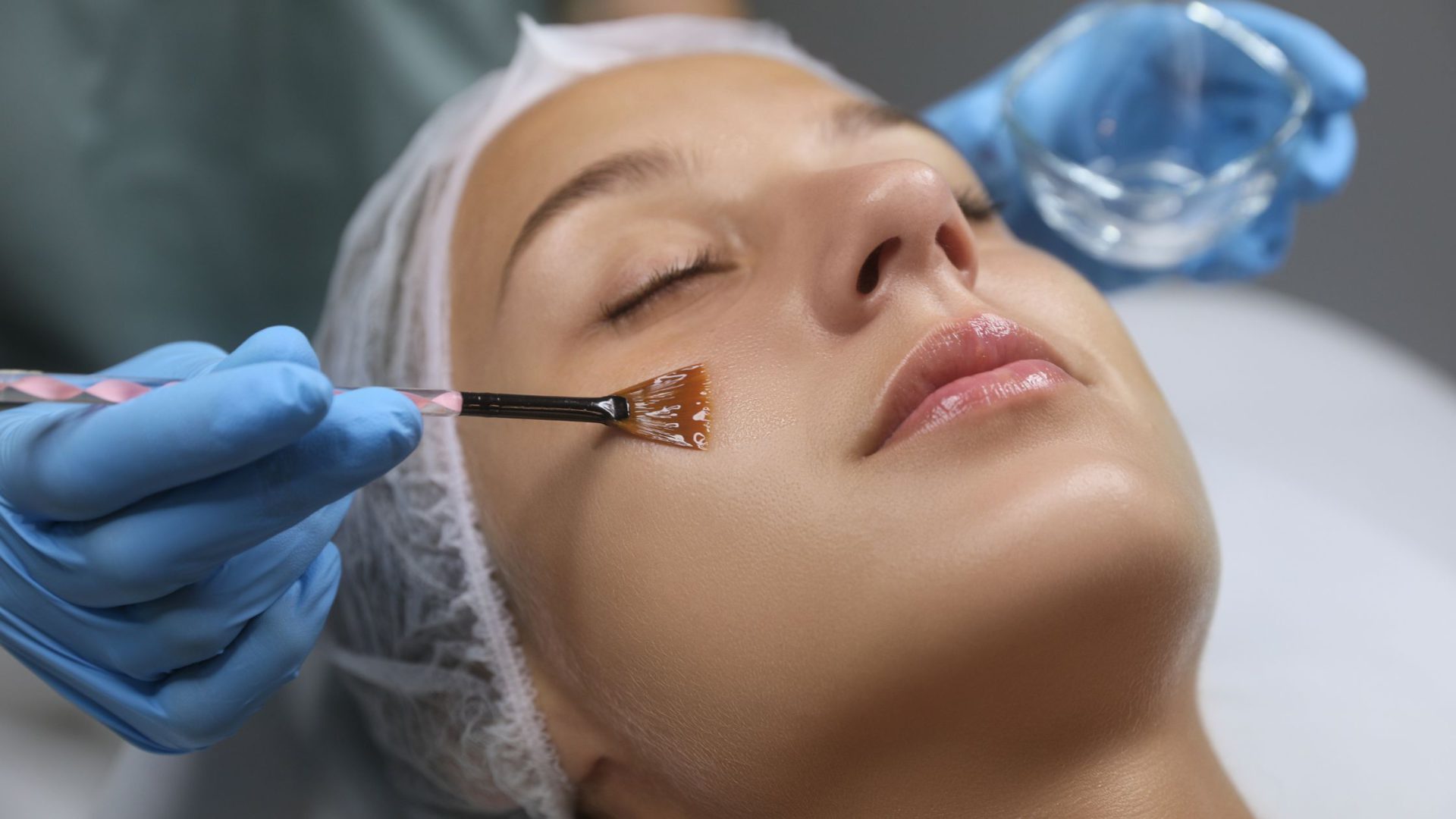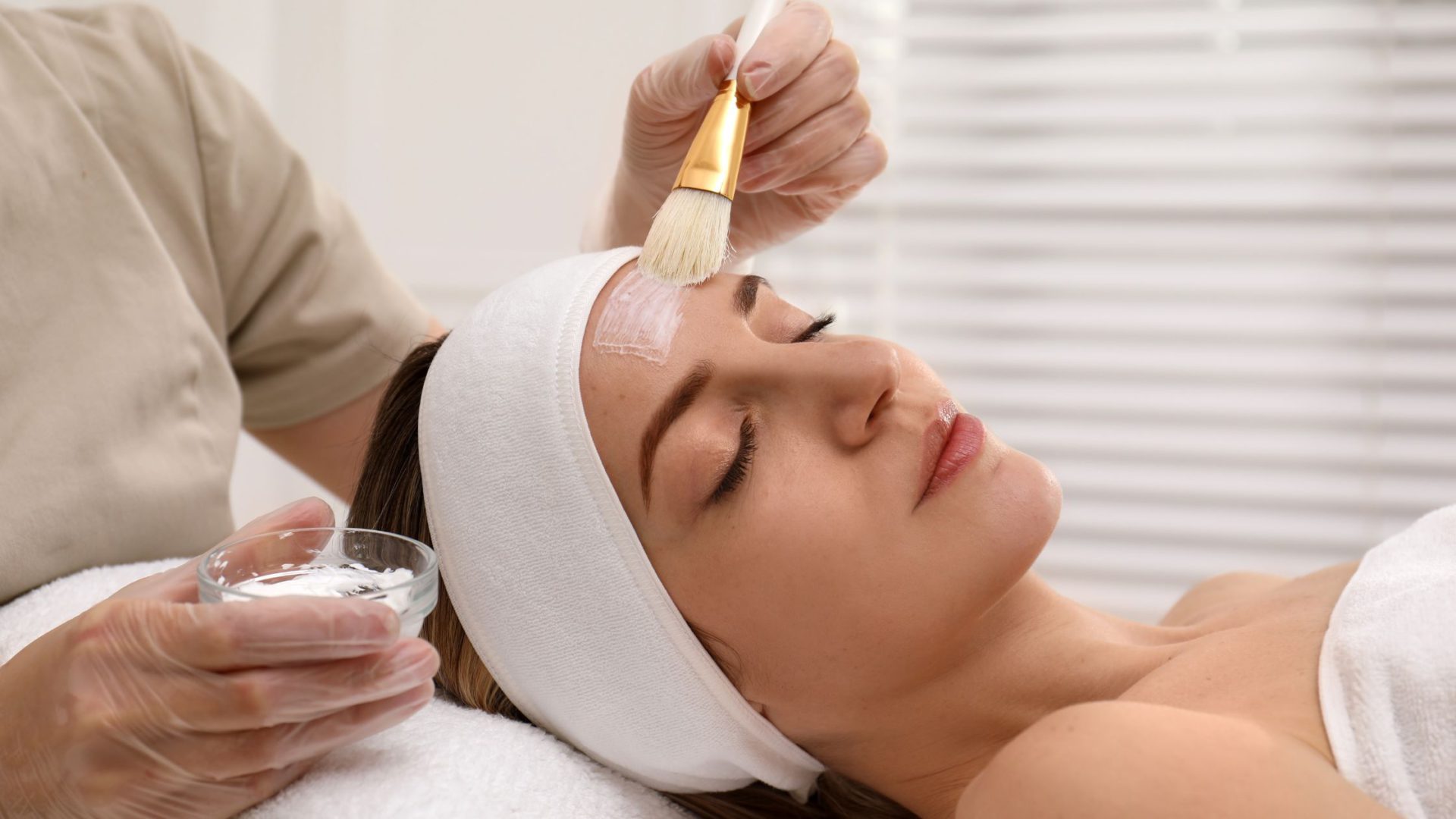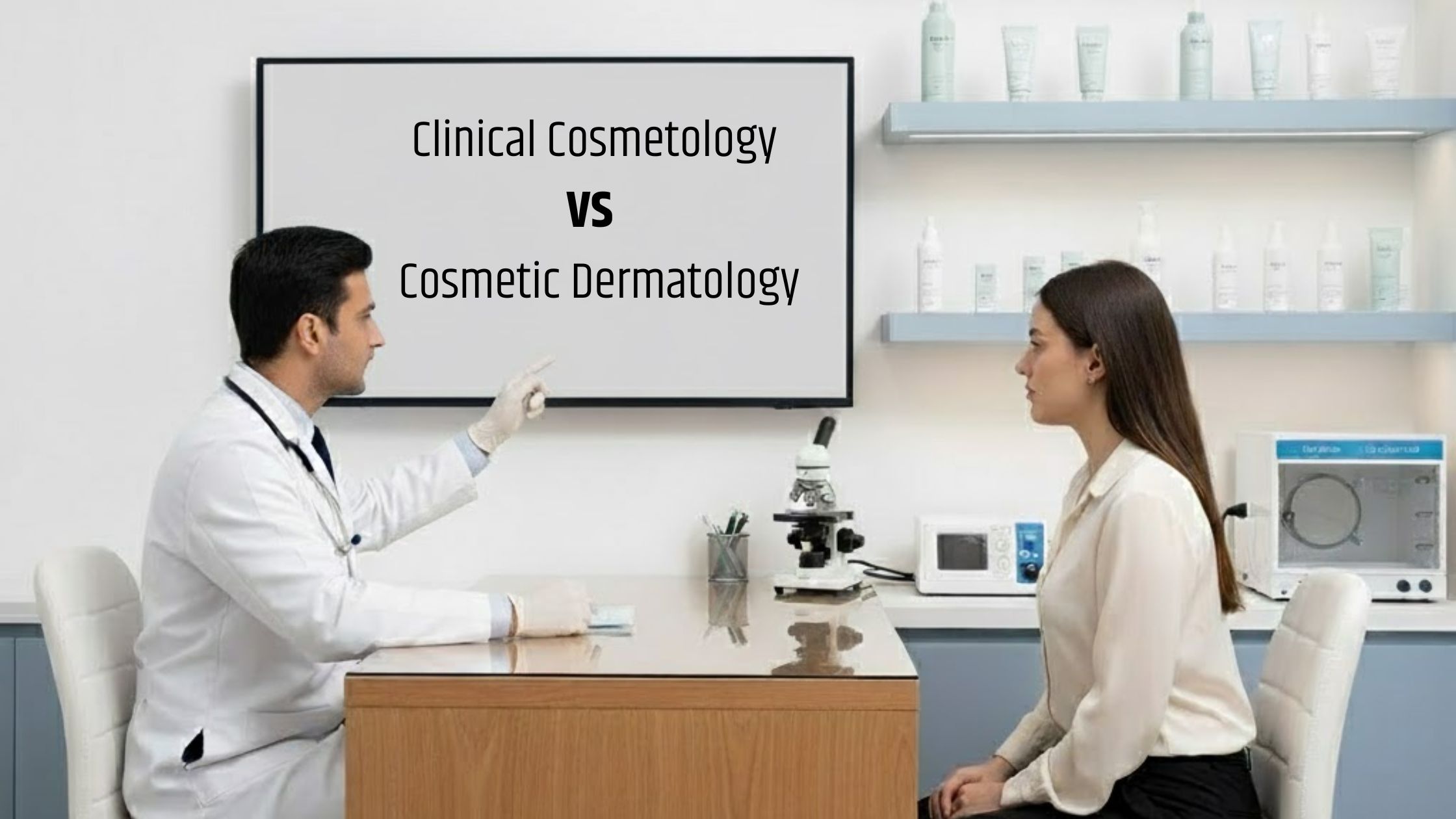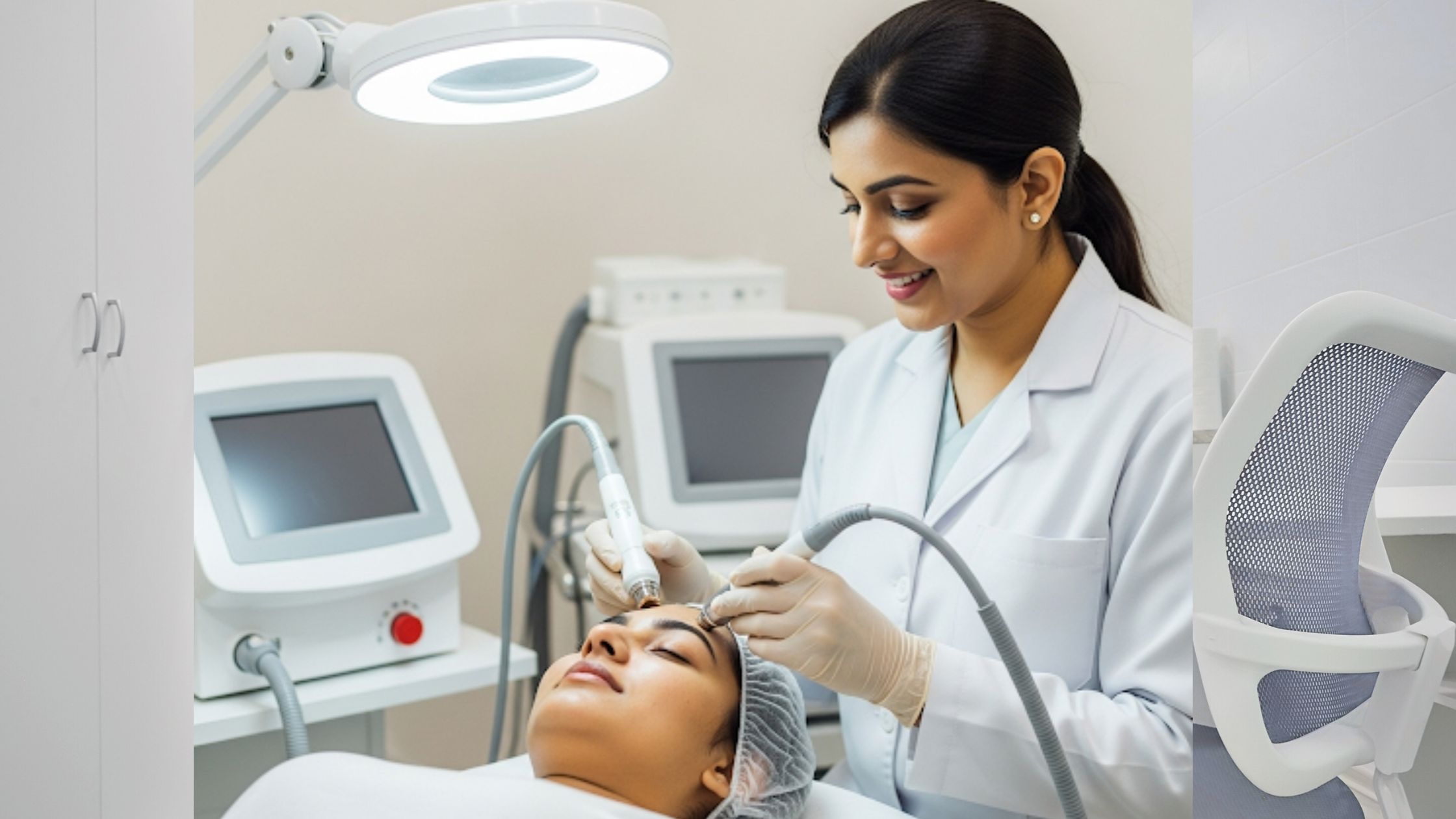Types of Chemical Peels in Cosmetology
Chemical peels treatment provides transformative results for attaining radiant and rejuvenated skin which utilise a variety of acids and exfoliating agents. By gently eliminating the outer layer of dead cells, chemical peels effectively reduce the visibility of fine lines, wrinkles, hyperpigmentation, and acne scars, uncovering a smoother and more evenly-toned appearance. Chemical peels are categorised into three main types are Superficial, Medium, and Deep, each type varies in penetration depth and intensity, effectively addressing diverse skin concerns and delivering impressive outcomes. Here is some detail information about Chemical peels:
- Superficial Peels: Superficial chemical peels, such as those utilising alpha-hydroxy acids (AHAs) such as glycolic acid or lactic acid, are considered the gentlest option. These peels delicately remove the outermost layer of the skin, encouraging cell renewal and targeting concerns such as lackluster skin, rough texture, and minor hyperpigmentation. They are recommended for individuals with sensitive skin or those looking for a mild refresh.
- Medium Peels: Medium peels have the ability to penetrate the skin at a deeper level compared to superficial peels, reaching the dermis, which is the middle layer. These peels usually consist of trichloroacetic acid (TCA) or a combination of TCA and other acids. They are particularly effective in addressing moderate skin imperfections like fine lines, wrinkles, and uneven pigmentation. Although medium peels may necessitate a few days of recovery time for the skin to heal and shed, the outcomes can be remarkable, showcasing noticeable enhancements in both skin tone and texture.
- Deep Peels: Deep chemical peels, often utilizing trichloroacetic acid or phenol-based solutions, are considered the most aggressive and powerful choice. These peels reach the deepest layers of the skin, targeting severe pigmentation problems, deep wrinkles, and significant skin damage. Strong effects, deep peels are typically recommended for individuals with more serious skin issues and necessitate thorough pre-treatment preparation, anesthesia, and an extended recovery time.

Benefits of Chemical Peels
- Improves skin texture and tone: Chemical peels exfoliate the skin, removing dead cells and promoting cells. This treatment process results in smoother, more even skin texture and tone, giving you a fresh and rejuvenated appearance.
- Reduces fine lines and wrinkles: Some chemical peels, especially medium and deep peels, trigger collagen production in the skin. Collagen aids in filling out fine lines and wrinkles, diminishing their visibility and bringing back a youthful glow to the skin.
- Addresses pigmentation issues: Chemical peels have proven to be successful in diminishing the visibility of dark spots, hyperpigmentation, and an uneven skin tone caused by sun damage, aging, or hormonal changes. By encouraging the removal of pigmented skin cells, chemical peels can uncover a more harmonious complexion.
- Treats acne & scars: Chemical peels that include salicylic acid or TCA provide advantages in treating acne and minimizing the appearance of acne scars. These peels effectively clear out pores, decrease inflammation, and facilitate the healing process, leading to clearer and smoother skin texture.
- Stimulates collagen production: Chemical peels, whether medium or deep, encourage collagen production in the skin, which aids in preserving skin elasticity and firmness. This ultimately contributes to a more youthful and revitalized look as time goes on.
- Enhances overall skin radiance: Chemical peels work by exfoliating the skin and accelerating cell turnover, unveiling fresher and healthier skin cells. This process leads to a brighter and more radiant complexion.
Conclusion
In conclusion, chemical peels provide an effective solution for achieving flawless and youthful complexions by addressing a wide range of skin concerns. It can improve texture and tone, reduce fine lines and wrinkles, treat pigmentation issues, acne, and scars, as well as stimulate collagen production. These powerful treatments provide a comprehensive approach to rejuvenating the skin.
Additionally, if you have aspirations to pursue a career in cosmetology, consider IBCD’s Fellowship in Clinical Cosmetology Course. Take the first step towards a fulfilling career and unlock your potential in the field of skincare.








